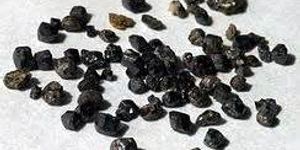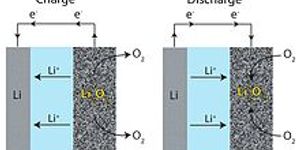Chemistry & Physics
Forgetting to Turn Light Out Leads to 400-Fold Improvement in Conductivity
JAN 01, 2014 12:00 AM PST
Share
Quantum Bit Superposed for Record-Smashing 39 Minutes
 The seemingly-impossible goal of building a functioning quantum computer took a major step forward this week, as a Canadian-led team of researchers announced they had made a particle be super positioned as both a 1 and a 0 for a staggeringly-long 39 minutes: more than 10 times longer than any previous attempt has accomplished. And incredibly, the superposed "qubit" remained stable at room temperature.
The seemingly-impossible goal of building a functioning quantum computer took a major step forward this week, as a Canadian-led team of researchers announced they had made a particle be super positioned as both a 1 and a 0 for a staggeringly-long 39 minutes: more than 10 times longer than any previous attempt has accomplished. And incredibly, the superposed "qubit" remained stable at room temperature.The research, published in the journal Science, is being hailed as a major breakthrough. One that not only demonstrates that quantum computing is feasible but that it might be possible to adapt current manufacturing technology to produce quantum-based systems on a commercial scale.
The advantages of a quantum computer are enormous in comparison to the standard model on which all digital processing is built upon. From the earliest days, computers have based the input, storage, processing and output of information on a binary system using 1s and 0s, individually referred to as bits. Quantum computing however would employ the very peculiar properties of quantum mechanics, which establish that there are more states a particle can exist in other than 1 and 0.
According to quantum theory a particle can be 1, it can be 0... and it can be both at the same time! In a realm where normal understanding of numbers breaks down into outright oddness, the digital model no longer applies and another unit of information - called the qubit - comes into play. With more possible states from which to operate and calculate, a working quantum computer would be exponentially more powerful than any current computer: work that would take years or even decades for an existing computer could be accomplished in literally seconds.
The problem is that in keeping with quantum mechanics, a qubit cannot be duplicated or even measured without altering the state of the particle: destroying the information while attempting to process it, and making even error-correction practically impossible. One solution has been to apply a "brute force" approach: giving the same state to a multitude of qubits.
Unfortunately for all of the enticing qualities of a quantum system, real-world applications have been "really sort of pie in the sky because no one has a qubit that can last long enough," said Mike Thewalt, physics professor at Simon Fraser University in Burnaby, British Columbia and co-author of the study.
The longest that a qubit has been determined to maintain superposition has been mere seconds, achieved at temperatures hovering just above zero on the Kelvin scale. Thewalt, working with Stephanie Simmons of Oxford University, Ph.D candidate Kamyar Saeed and others, embedded phosphorous atoms within a very pure silicon crystal matrix at low temperature, hit the crystal with laser light to tear away electrons that would lead to super positioning collapse, and then bombarded the crystal with magnetic pulses. The newly-created qubits remained super positioned for 39 minutes, and even lasted three hours at super-cold temperatures before being warmed again and found to still be carrying information.
In the absence of expensive and bulky equipment previously required to achieve and hold super positioning, it is already being suggested that silicon-based processor manufacturing methods currently used to build computers could be retooled toward the manufacturing of quantum-based systems. However, the next biggest hurdles - increasing the scale of the qubits utilized and finding a means of reading the data - remain elusive. The research team is confident that it is only a matter of time before these obstacles are also overcome. Even so, the team's achievement is still much to celebrate.
You May Also Like
Loading Comments...








